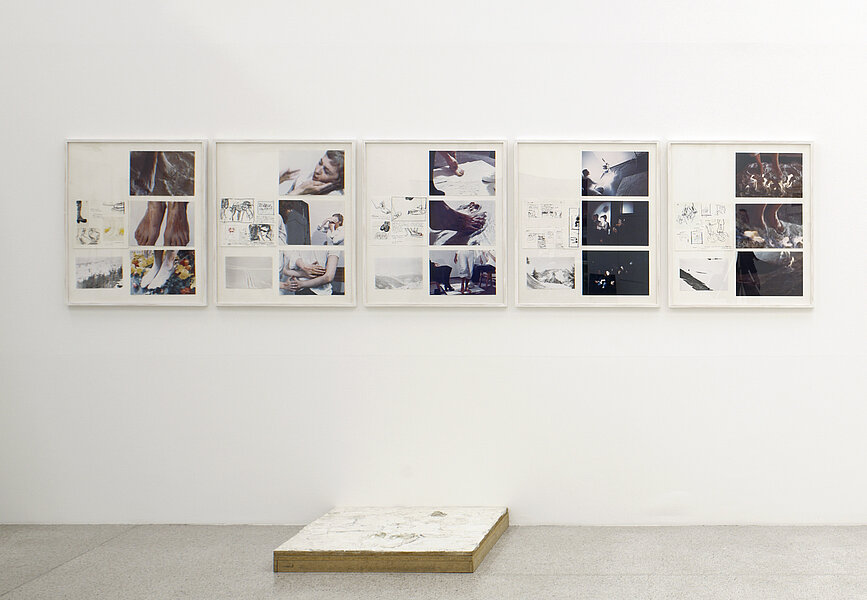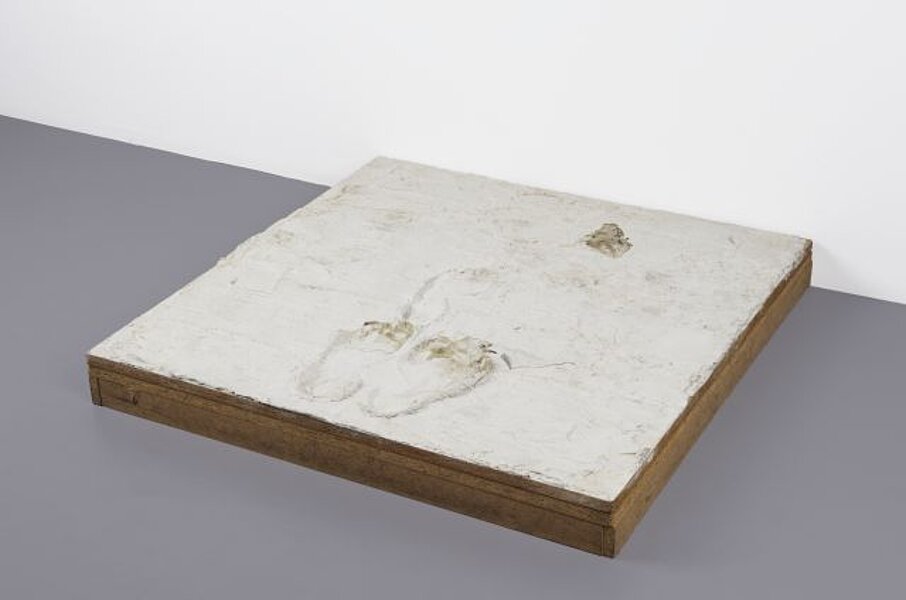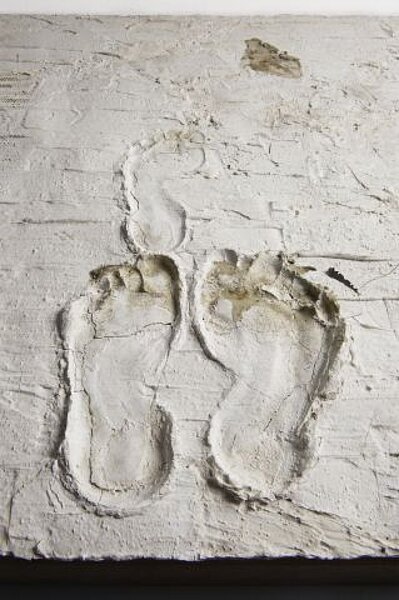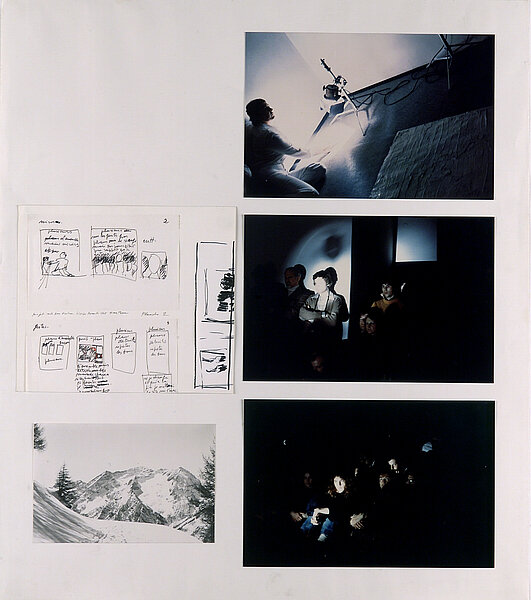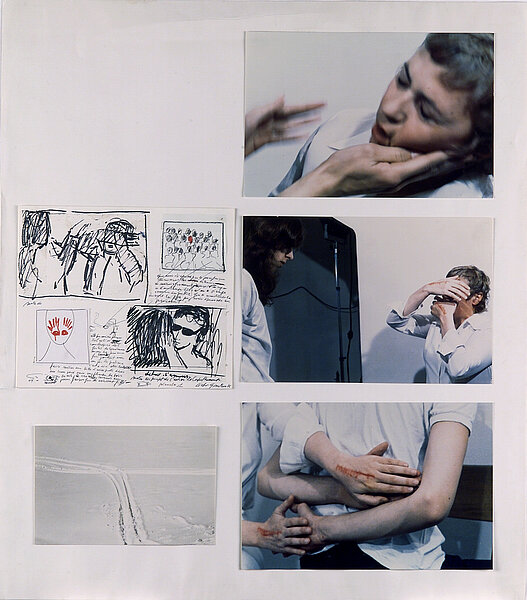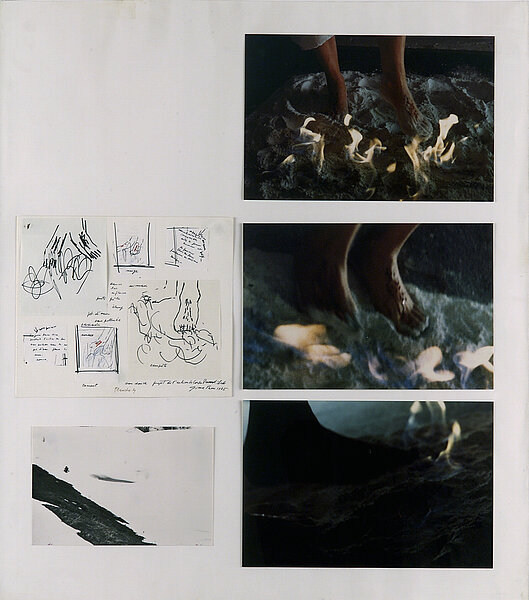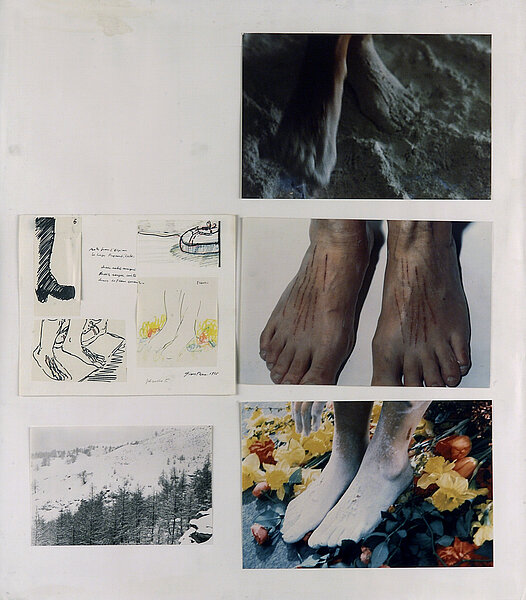
Pane, Gina
Le corps pressenti: L‘amour
1975
| Object description | Color photographs, ink on paper, plaster, razor blade |
|---|---|
| Dimensions |
Rahmenmaß:
height: 82 cm,
width: 72 cm,
depth: 3 cm
Objektmaß:
height: 33 cm,
width: 22 cm,
height: 24 cm,
width: 16 cm,
height: 28 cm,
width: 24 cm,
height: 87,5 cm,
width: 87,5 cm,
depth: 12 cm
|
| Year of acquisition | 1994 |
| Inventory number | P 399/0 |
| Creditline | mumok - Museum moderner Kunst Stiftung Ludwig Wien |
| Rights reference | Bildrecht, Wien |
| Further information about the person | Pane, Gina [ULAN] |
| Literature |
Cinéma brut.Eine alternative Genealogie der Filmavantgarde Die Wohltat der Kunst. Post/Feministische Positionen der neunziger Jahre aus der Sammlung Goetz Just Love Me. Post\Feminist Positions of the 1990s from the Goetz Collection Österreich 1900-2000. Konfrontationen und Kontinuitäten |
Franco-Italian artist Gina Pane is one of the most important representatives of French “art corporel”. She came to prominence because of her spectacular actions in the 1970s which were choreographically planned down to the smallest details and during which she used her body ruthlessly, as material. Each action was performed only once and recorded using photographs, sketches and relicts. The panels shown here, including the floor object with footprints, is from an action that was performed in 1975 at the Galerie Krinzinger in Innsbruck. Gina Pane regarded the body as a projection surface on which she could inscribe pictures — her own and those of others. The power and violence of these inscriptions was epitomised by the artist in the form of self-inflicted wounds that invoked the Christian iconography of martyrdom. Along with rose thorns as a symbol of suffering, scratches on hands and feet allude to Jesus’ stigmata and the burning of the martyr Lawrence. Gina Pane: “The wound is a sign of the body’s state of extreme fragility, a sign of suffering, a sign that indicates the aggression of external circumstances, of the violence to which we are always exposed. (...) The wound is the body’s memory; it memorizes its fragility, its pain, and thus its real existence.” Pane wants to shake up our complacency with her actions. She is appealing to us directly when she says: “When I open my body up so that you can see the blood in it, I do it out of love for you: out of love of the other. (...) That is why your presence during the action is important to me.”
© mumok – museum moderner kunst stiftung ludwig wien
